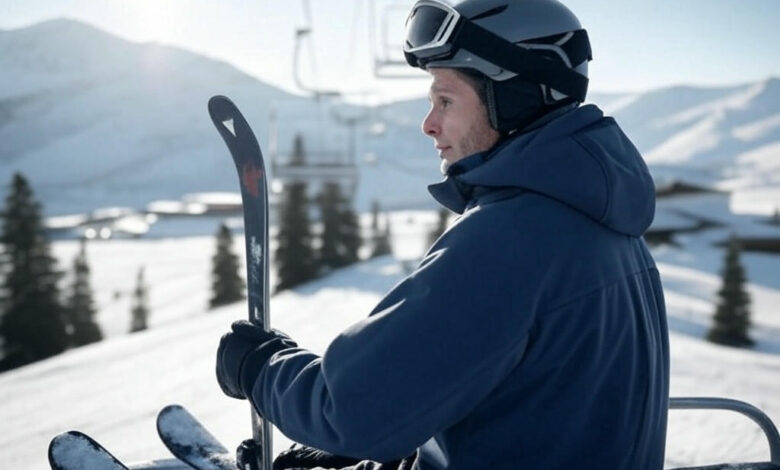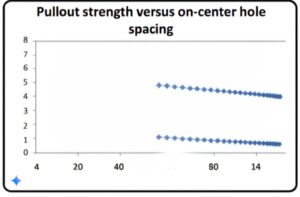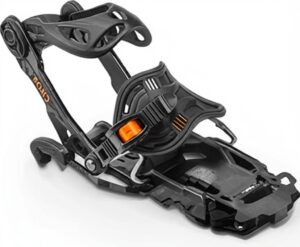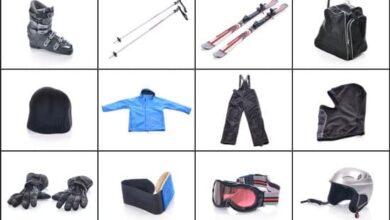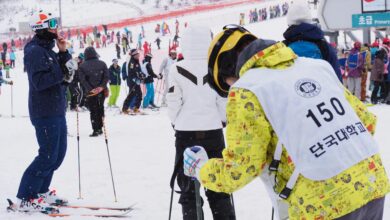Ski binding placement plays a crucial role in your performance, comfort, and control on the slopes. Whether due to boot size changes, performance adjustments, or adapting to new snow conditions, remounting your skis can significantly enhance your skiing experience. Here are ten key reasons why you might need to remount your skis:
1. Your Boot Size Has Changed
-
If you’ve switched to a larger or smaller ski boot, your bindings may no longer align properly.
-
Proper binding placement ensures safety, comfort, and better energy transfer.
2. Adjusting for More Stability
-
If your skis feel too reactive or twitchy, shifting the bindings backward can provide more stability.
-
Ideal for skiers who prefer a smoother and more controlled ride, especially at high speeds.
3. Enhancing Maneuverability
-
Moving your bindings forward can make skis more responsive and easier to turn.
-
Beneficial for skiers who struggle with initiating turns, particularly in tight or technical terrain.
4. Improving Powder Performance
-
Skiers who frequently ride in deep snow may want to move bindings forward for increased flotation.
-
Helps prevent the tips from sinking, making powder skiing more effortless.
5. Adapting to Different Terrain
6. Accommodating Growing Kids
7. Bought Used Skis with Pre-Mounted Bindings
-
If you’ve purchased second-hand skis, the existing binding placement may not match your boot size.
-
Remounting ensures proper fit and alignment for a safer skiing experience.
8. Changing Skiing Style or Skill Level
-
If you’ve progressed from beginner to advanced skiing, you may require a new binding position.
-
Adjusting the stance can enhance carving ability, freestyle tricks, or aggressive downhill performance.
9. Fixing an Improper Mount
-
Sometimes, bindings were not originally mounted in the ideal position for your height, weight, or skiing preference.
-
A remount can correct this and optimize performance.
10. Enhancing Control on Steep Slopes
-
If you’re skiing more technical terrain, a forward-mounted binding position can provide better edge control.
-
This adjustment is useful for navigating steep, narrow, or mogul-filled slopes.

Remounting your ski bindings can make a significant difference in your overall skiing experience. Whether you’re adjusting for comfort, performance, or growing feet, ensuring the right binding placement helps you maximize control, stability, and enjoyment on the slopes. If you’re unsure about the ideal position, consult a ski technician to help you determine the best remounting option based on your skiing style and needs.
How Many Times Can I Remount My Skis?
Ski bindings play a crucial role in your safety and performance on the slopes. Whether you’ve upgraded your boots, changed your skiing style, or bought used skis, you might wonder: Can you remount ski bindings? The short answer is yes, but there are limits.
Most ski professionals recommend not remounting a ski more than three times. Each time you drill new holes into your skis, you weaken their structure slightly. If not done correctly, remounting ski bindings too often can reduce durability, cause loose screws, and even lead to ski failure.
How Many Times Can You Mount Skis?
Technically, skis can be remounted multiple times, but there are restrictions:
-
The new holes must be at least 8mm away from the old ones to prevent structural damage.
-
Each remounting reduces the available space for bindings, making future adjustments difficult.
-
Remounting once or twice is usually fine, and your skis can handle it without issues. However, beyond three remounts, the risk of ski weakness increases.
When Should You Consider Remounting Ski Bindings?
There are several reasons why you might need to remount your ski bindings:
✅ Changing boot size: If your new ski boots don’t fit your current binding placement, you’ll need a remount.
✅ Adjusting stance and performance: Moving bindings forward can make skis more responsive, while moving them backward can improve stability.
✅ Buying used skis: If the existing bindings don’t match your boot size, remounting is necessary.
✅ Worn-out bindings: If your bindings are old, damaged, or outdated, you may need to replace and reposition them.
Can You Change Bindings on Skis?
Yes, you can change bindings on skis, but it requires precision. If you’re replacing bindings with a different model, the mounting holes may not align, which means drilling new ones. Remounting bindings should always be done by a professional to avoid damaging your skis.
Are Ski Bindings Universal?
No, ski bindings are not universal. Different brands, models, and sizes have specific mounting patterns. Always ensure that your new bindings are compatible with your skis before remounting.
How to Remount Ski Bindings Safely?
If you need to remount bindings, follow these guidelines:
-
Check for available space: Make sure you have enough room to drill new holes at a safe distance from the old ones.
-
Use professional tools: Installing ski bindings requires precision, so it’s best to let a ski shop handle it.
-
Inspect ski condition: If your skis have been mounted multiple times, check for any signs of damage or weakness before proceeding.
Remounting ski bindings is possible, but it should be done carefully. If you’re wondering how to install bindings on skis or whether it’s worth changing bindings on skis, always consider the number of previous mounts. Twice is usually fine, three times is pushing it, and anything beyond that can compromise your skis’ durability. When in doubt, consult a ski technician to ensure a safe and effective remounting process.
Can I Remount My Own Skis?
Yes, you can remount your own skis, but it requires skill, precision, and the right tools. Ski binding placement is crucial for both performance and safety, so if you don’t have experience, it’s highly recommended to get it done by a professional ski technician.

Things to Consider Before Remounting Your Skis
If you’re thinking about remounting ski bindings yourself, here are some important factors to keep in mind:
✅ Proper Tools Are Required – You’ll need a drill, mounting jig, screws, and a binding template specific to your ski bindings. A small mistake can weaken your skis.
✅ Spacing of the New Holes – New holes must be at least 8mm away from the old ones to prevent weakening the ski’s core. Poor placement can result in loose bindings or even ski failure.
✅ Limited Number of Remounts – Most skis can only be remounted up to three times before their structure weakens. If your skis have been remounted multiple times, you might need to fill old holes before installing new bindings.
✅ Risk of Damaging Your Skis – If you don’t drill holes properly or use incorrect measurements, you could crack or ruin your skis.
✅ Professional Mounting Ensures Precision – A ski shop has the correct jigs, tools, and expertise to mount bindings accurately for your boot size and skiing style. Improper mounting can lead to reduced control, instability, or even injury.
How to Remount Ski Bindings Yourself (If You Must)
If you’re confident in your DIY skills and still want to remount your bindings at home, follow these steps carefully:
1. Gather the Necessary Tools
You’ll need:
🔹 A ski drill with the correct bit size
🔹 Binding jig or mounting template
🔹 Epoxy glue for sealing holes
🔹 Screws and a screwdriver
🔹 Measuring tape and marker
2. Remove the Old Bindings
Unscrew and take off the old bindings. Check the ski base for previous mounting holes and decide on the new placement.
3. Mark the New Binding Positions
Use a mounting jig to properly align the bindings for your ski boots. Make sure the new holes are at least 8mm away from the old ones.
4. Drill New Holes Carefully
Drill pilot holes to the exact depth required (usually around 9mm). Avoid over-drilling, as this can weaken the ski.
5. Fill Old Holes (If Necessary)
If you’re mounting in a close area, use epoxy or wood glue to fill the old holes and let them dry completely.
6. Install the Bindings
Secure the bindings using binding screws and tighten them properly. Do not overtighten, as this can strip the holes.
7. Test the Bindings
Once installed, test the bindings with your ski boots to ensure they’re secure and properly aligned.
While remounting ski bindings is possible as a DIY project, it’s not recommended unless you have the right tools and experience. Ski shops use professional binding jigs and specialized drills to ensure a perfect fit, reducing the risk of mistakes. If you’re unsure, it’s always safer to let an expert handle it.
Will Remounting Damage My Skis?
Remounting your skis does not necessarily damage them, but it can weaken their structure if done too many times or incorrectly. Every time you drill new holes for ski bindings, you are making small changes to the ski’s core strength and integrity. If done properly by a professional or with the right technique, remounting should not significantly harm your skis.
How Remounting Affects Your Skis
Each time you remount your ski bindings, you are drilling new holes into the ski’s core. Here’s how it can impact your skis:
✅ Minor Impact If Done Once or Twice – The first one or two remounts usually don’t cause noticeable damage, especially if the new holes are placed properly.
⚠️ Weakened Ski Structure After Multiple Remounts – Most skis should not be remounted more than three times because excessive drilling can weaken the ski’s material.
✅ Proper Hole Placement Matters – To avoid damage, new holes should be at least 8mm away from the previous ones. Overlapping holes can lead to loose bindings and structural failure.
⚠️ Risk of Water Damage – If old holes are not properly filled with epoxy or glue, water can seep inside, causing the ski core to rot or weaken.
✅ Professional Remounting Minimizes Risk – Ski shops use precision tools to ensure the best placement for new bindings, preventing unnecessary stress on the ski.
How to Minimize Damage When Remounting Skis
If you need to remount your skis, follow these tips to reduce potential damage:
✔️ Limit Remounting to 2-3 Times – Most skis can handle one or two remounts without major issues. More than that increases the risk of damage.
✔️ Ensure Proper Hole Spacing – Make sure the new mounting holes are at least 8mm apart from previous holes to maintain ski strength.
✔️ Fill Old Holes Properly – Always seal old holes with epoxy or glue to prevent water from entering and damaging the ski core.
✔️ Seek Professional Help – A ski technician can determine the best placement for new bindings, ensuring optimal balance and performance.
✔️ Consider a New Pair If Needed – If your skis have already been remounted multiple times, it may be safer to invest in a new pair instead of further weakening them.
Will Remounting Ruin Your Skis?
Remounting does not automatically ruin your skis, but doing it too often or incorrectly can weaken their structure. If done properly, one or two remounts are generally safe. However, to extend the lifespan of your skis, it’s best to minimize remounting and have it done by professionals when needed.
How Common is Remounting Skis?
Remounting ski bindings is a fairly common practice, especially among experienced skiers, growing children, and those who buy used skis. Many skiers will remount their bindings at least once in the lifetime of their skis, while some may do it multiple times depending on their needs.
Who Commonly Remounts Skis?
🔹 Skiers Upgrading or Changing Boots – If you change your boot size, you may need to remount your bindings to match the new fit.
🔹 Skiers Adjusting Stance or Performance – Some skiers remount their bindings forward or backward to improve performance in different snow conditions.
🔹 Used Ski Buyers – Many skiers buy second-hand skis with bindings that don’t match their boot size, requiring a remount.
🔹 Children and Teenagers – Growing kids often outgrow their ski boots, leading to frequent remounting to accommodate their new sizes.
🔹 Skiers Testing New Positions – Some advanced skiers adjust their stance by moving bindings forward for better turning or backward for more stability in deep snow.
How Often Do People Remount Skis?
✔️ First-time remounts are common – Many skiers remount once, usually after getting new boots or buying used skis.
✔️ More than 2-3 remounts is rare – Most professionals advise against remounting skis more than three times to avoid weakening the ski structure.
✔️ Some skiers never remount – If bindings are properly set from the start, many skiers never need to remount during their ski’s lifetime.
How Ski Shops Handle Remounting
Since remounting is common, ski shops regularly provide this service. They use precision tools to ensure:
✅ Proper hole spacing – New holes are at least 8mm apart to maintain ski integrity.
✅ Sealed old holes – Prevents water damage to the ski’s core.
✅ Correct positioning – Ensures better control, balance, and performance.
Is Remounting Skis Normal?
Yes, remounting skis is a common and normal practice, especially for skiers who upgrade boots, buy used skis, or need performance adjustments. However, to avoid damage, it’s best to limit remounting to 2-3 times and have it done by a professional ski technician.
How Much Does It Cost To Mount Skis?
The cost to mount skis varies depending on several factors, such as where you get the service, whether you bring your own bindings, and if any additional adjustments are needed. Generally, you can expect to pay anywhere from $40 to $100 for a professional ski binding mount.
Factors That Affect the Cost of Mounting Skis
🔹 Ski Shop vs. Resort vs. DIY – Prices differ based on where you get the service. Ski resorts typically charge higher fees (around $70-$100), while local ski shops may charge $40-$60.
🔹 New Bindings vs. Used Bindings – Mounting brand-new bindings is usually cheaper than remounting old ones because remounting requires extra work (like filling previous holes).
🔹 Remounting vs. First-Time Mounting – If you are remounting bindings (changing their position or switching to a different binding type), it may cost $10-$20 more than a first-time mount.
🔹 Boot Compatibility Adjustments – If your boots don’t perfectly fit the existing bindings, some ski shops charge extra for adjustments.
🔹 Additional Services – Some ski shops offer tuning, waxing, or safety checks along with mounting, which could increase the total cost.
Typical Price Ranges for Mounting Skis
✔️ Basic Mounting (Brand-New Skis & Bindings) – $40 to $70
✔️ Remounting Used Skis with New Binding Position – $50 to $90
✔️ Mounting at a Ski Resort or Premium Location – $70 to $100
✔️ DIY Mounting (Using a Drill & Mounting Template) – $0 (Only Equipment Cost)
Is It Worth Paying for Professional Ski Mounting?
✅ Yes, if you want safety and precision. Ski shops have professional tools to ensure proper alignment and a secure fit.
✅ Yes, if you have expensive skis. Incorrect DIY mounting could damage your skis permanently.
✅ No, if you are skilled and have the right tools. Some experienced skiers use binding mounting templates and power drills to mount skis at home.
How Much Should You Budget for Ski Mounting?
Expect to pay $40 to $100 to get your skis professionally mounted. If you’re remounting or getting bindings adjusted, it may cost slightly more. While DIY mounting is an option, it’s best for those with experience. For most skiers, professional mounting is worth the cost to ensure a safe and precise setup.
If I Buy Used Skies, Do I Need To Remount The Bindings?
Buying used skis can be a great way to save money, but one of the first questions that comes up is whether you need to remount the bindings. The answer depends on a few key factors, including your boot size, the mounting position, and the condition of the bindings.
In most cases, if the previous owner’s bindings do not fit your ski boots, you will need to remount them. However, if the bindings are adjustable and can be modified to fit your boots without drilling new holes, then remounting may not be necessary.
When Do You Need to Remount Bindings on Used Skis?
1️⃣ Your Boot Size Is Different
-
Ski bindings are mounted based on boot sole length (BSL), and if your boots are significantly smaller or larger than the previous owner’s, the bindings may not fit.
-
If the bindings cannot be adjusted to your size, remounting is necessary.
2️⃣ The Bindings Are Worn Out or Outdated
-
If the bindings are old, damaged, or not on the manufacturer’s approved list, they might be unsafe to use.
-
In such cases, replacing and remounting new bindings is the best option.
3️⃣ You Want a Different Binding Position
-
Some skiers prefer a different mounting position for their style (e.g., forward for freestyle, backward for stability).
-
If the original mounting point doesn’t match your preference, remounting will be required.
4️⃣ The Previous Mounting Holes Are Too Worn or Stripped
-
If the ski has been mounted multiple times, the drilled holes may become weak.
-
In such cases, a professional may have to fill the old holes and remount the bindings in a different position.
5️⃣ You Bought Used Skis with No Bindings
When Can You Avoid Remounting?
✅ The Bindings Are Adjustable
✅ Your Boot Size Is Close to the Previous Owner’s
✅ The Existing Binding Position Works for You
How Many Times Can Skis Be Remounted?
-
Most skis can be remounted up to 3 times before structural integrity becomes an issue.
-
The new binding holes must be at least 8mm away from the old ones to maintain strength.
-
If a ski has been mounted too many times, it may compromise durability and performance.
Should You Remount Used Skis?
-
Yes, if your boots don’t fit, the bindings are outdated, or you want a different stance.
-
No, if the bindings are adjustable, in good condition, and fit your boots properly.
-
If you’re unsure, take your used skis to a ski shop for a professional evaluation.
My Child is Growing a Boot Size, Can I Remount a Kids Ski?
